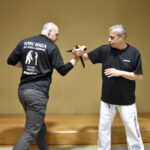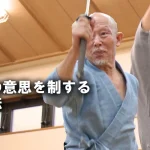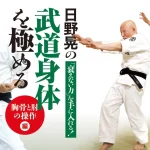 Hitohira Saito
Hitohira Saito
Text by Grigoris A.Miliaresis
Iwama Shin-Shin Aiki Shuren-kai: The birth of a koryu
As much as I occasionally enjoy playing the old-timer who has seen them all and done them all (or at least pretend to!) I must confess that I can’t possibly claim any memory of what some have called the Great Aikido Split of 1974, when Koichi Tohei (1920-2011) left the Akikai Organization to create his own, the Ki no Kenkyukai. I was just seven years old at the time and my interest in Japan, and consequently, in the martial arts wouldn’t take off for at least five more years. When I did find out about it, Koichi Tohei had already become another independent major player in the aikido world and the only link to the aikido of the old days, firmly rooted in Japan was Morihiro Saito, still based in Morihei Ueshiba’s country dojo in Iwama.
When the Saito split happened, it was 2003 and I was already practicing aikido; meanwhile, the Internet had already become an important part of our lives and much more information was available. Hitohiro Saito, the son of Morihiro Saito who had died in 2002, three years after the second Doshu, Kisshomaru Ueshiba, had separated from the Aikikai and had created his own organization, the one we now know as Iwama Shin-Shin Aiki Shuren-kai, based near the old Ueshiba dojo and shrine in Iwama but not on their grounds. And even though the ripples from that split weren’t as big as those of that involving Koichi Tohei, it did spark some very lively discussions at the dojo and on the Internet. Because for most people it was like a divorce between two families, the Ueshiba and the Saito, who had been married for over 50 years.
Morihiro Saito: The caretaker…
Morihiro Saito sensei was an oddity; I’ve heard people call him “aikido’s best kept secret” referring mostly to his choice to remain in Iwama and continue teaching what he had learned from Morihei Ueshiba in the 23 years he lived with him and was, arguably, his closest disciple during the last phase of his life. This dedication to the legacy of aikido’s O-Sensei was what made even people who never trained under him or never saw him teach or even demonstrate, to respect him enormously. And what made his 2002 death a severe blow to the aikido world and the 2003 split of his son from the Aikikai difficult to fathom: the question who would be keeping the spirit of the Iwama dojo alive without the Saito family present was in the lips of practitioners all over the world.
 Morihiro Saito and Morihei Ueshiba
Morihiro Saito and Morihei Ueshiba
Of course organizations have their ways of surviving: this is how they make history. Even though it was early in his career, the third Doshu, Moriteru Ueshiba managed to masterfully reinvent the Iwama dojo as “Ibaraki dojo” and balancing local teachers and long time practitioners who chose to not follow Hitohiro Saito with teachers from the Tokyo Honbu (including himself and later his son, the heir apparent to the Doshu position) made it institutionally linked to the Aikikai organization overriding the personal link that the Saito had established. And because time is merciless, today, 15 years after the split, there are people from Japan and abroad who spent days and weeks and months practicing in Iwama and who only know Saito as a name from the past –pretty much the same way they only know Morihei Ueshiba by name.
…and the co-creator
In a way though, the split immortalized Morihiro Saito in two different traditions: for the Aikikai he was the man who kept the Iwama dojo alive and this fact and his very presence is so tightly woven in the fabric of the post-war aikido history that cannot be denied, doubted or discredited. And for the Iwama Shin-Shin Aiki Shuren-kai, now in its puberty (it’s as old as the split: 15 years), he is the founder-after-the-founder, the person who never stopped preaching the gospel of Morihei Ueshiba. And of course, he is the father and main teacher of this generation’s leader which makes him as close and as important for the organization as Kisshomaru Ueshiba was for the Aikikai. And I don’t think parallels stop there: I too share the belief that together with the second Doshu and Koichi Tohei, Morihiro Saito was the creator of aikido as we know it today.
Even a cursory glance at the existing videos of Morihei Ueshiba, show that although a part of his legacy exists in what millions of people practice today as “aikido”, this part is actually small. What we see in today’s shihan is Morihei through the understanding of the three greats who succeeded him: his son, Kisshomaru Ueshiba, the chief instructor of the postwar Honbu Dojo, Koichi Tohei and the person living closest to him for the last quarter of his life, Morihiro Saito. These three people’s influence is so big that you can see it even in people who never trained with them: Kisshomaru Ueshiba’s big fluent movements can be seeing in people who are not directly affiliated with the Aikikai, Koichi Tohei’s explosive energy in people who didn’t follow him after the 1974 split and Morihiro Saito’s massive power in people who never stepped their foot in Iwama.
What makes Morihiro Saito’s case most amazing though is that he managed to influence so many people starting with a handicap: he didn’t have his own organization like Kisshomaru Ueshiba and Koichi Tohei or their cosmopolitan air -he never hid the fact that he was a local farmer boy who happened to come across what sounded like a living legend (“the old man doing a strange martial art in the mountains”), went to see, was enthralled and stayed. And when he did, he threw himself totally to the practice of the “old man with the strange techniques” and managed to keep up with him. By all accounts this mustn’t have been easy: the old man was also a farmer boy who had managed to multiply his physical and mental strength many times and keep it alive despite his years. But Morihiro Saito persevered and kept up and even in the videos the power he radiates is as close to the power of Morihei Ueshiba as it gets.
English books and a small countryside dojo
It’s interesting that Morihiro Saito’s unique approach to aikido managed to cross borders and find roots all over the world -from the US to Italy and from Australia to Sweden. I wouldn’t call it baffling though: the “Takemusu Aikido” series of books produced with Stanley Pranin and particularly volume 6, the commentary on Morihei Ueshiba’s “Budo” training manual from 1938 gave the English-speaking world a glimpse into his interpretation of aikido, whereas his insistence in teaching jo and bokken was the answer to the needs of all the aikidoka who were wondering why the Honbu Dojo doesn’t teach weapons. Incidentally, it’s interesting that it’s mostly non-Japanese who are constantly asking for weapons’ techniques (I can attest to that, having practiced aikido mostly outside Japan): in Japan the people who practice at the Honbu Dojo and its satellites don’t seem to care much about this aspect of aikido practice.
And then there is the small town/uchideshi mythology: for those who wanted to live their “training hard in a small dojo in rural Japan” myth, the Iwama dojo and Morihiro Saito provided that in abundance! The town of Iwama itself, the dojo surroundings and living and practicing facilities, the uchideshi program, the tough attitude of both the instructor and the locals, actual and by association and above all, the really hard practice, were exactly what the non-Japanese aikidoka needed to feel that their aikido was “the real thing”. In a sense, the people who went to Iwama during the Saito period learned both a modern martial art and a classical one, a modern budo and a koryu bugei, in circumstances that fit perfectly with their idea of how budo must be taught: deep in the heart of the Japanese countryside, in a private, dedicated dojo, next to a Shinto shrine, from a personal student of the founder, on a personal basis and while living on the premises and working the land.
I don’t make fun of the above: everyone who was ever interested in Japanese budo had these fantasies, mostly because up until a few decades ago, they weren’t fantasies! Even today, every time I tell someone from abroad that most koryu (or budo for that matter) are practiced in municipal sports centers with spaces rented by the hour, I can see the disappointment in their eyes. We grew up to believe that municipal sports centers are for basketball and ping-pong, not for noble paths to self realization like the martial arts. So I understand exactly why all these people flocked to Iwama the years Morihiro Saito was teaching there: I felt the same way too when I visited the dojo even though it was well after his passing, the split and well into the “Ibaraki Dojo” period. It is the dojo everyone wants to train in.
Saito legacy cont’d: Hitohira Saito
I can’t begin to imagine how it must have been for Hitohiro (now Hitohira) Saito to have been born and spent the first years of his life there, with Morihei Ueshiba still alive. Even if we assume that he didn’t get any real training from the founder of aikido (when Morihei Ueshiba died, he was only 12 years old), the very fact that his everyday life was the dojo, Ueshiba himself and his wife, Hatsu, an extra set of grandparents and all those people coming to practice, must have been determining for his future life. I mean yes, he is a chef and artist of some renown but, I wonder, was it ever any doubt that he would become involved with aikido in a way deeper than a casual practice once or twice a week? Let’s face it: like the scions of the Ueshiba, he is aikido royalty so his future was pretty much predestined.
In a way, his genealogy and upbringing, explain Hitohira Saito’s decision to leave the Aikikai; I can’t pretend that I know how he feels or what he thinks but I can understand that if your relationship with something is so old and so deep and so personal to be involving family, real and perceived, you want it to develop in your own terms. And yes, you can see the others’ (i.e. the Aikikai’s) point of view but you will draw the line somewhere. And his line, as stated in his September 2004 statement, the one that went around during his seminar in Italy, was that he wanted to keep the right to issue Iwama-ryu certificates for his students. Which, again brings to mind the way the koryu bugei are organized –even a koryu-styled name is used: Iwama-ryu, signifying the importance that place has for him, as it did for his father.
And why wouldn’t it? He was born there, his father was born and died there, he learned aikido there, he is teaching aikido there –he is literally a child of the land and he wanted to keep it alive in the name of his style (and he did, eventually naming his organization Iwama Shin-Shin Aiki Shuren-kai), pretty much the same way Kashima Shinto-ryu and Katori Shinto-ryu (and even my Toda-ha Buko-ryu) do. Just to be clear, this doesn’t mean I choose sides in his dispute with the Aikikai: I don’t have all the facts and even if I did, it’s not my place. But I can see where he comes from, literally and figuratively, I can see why he decided to draw that particular line in the sand and I can see why he continues the way he does. And, frankly, what I saw that day at the 11th Enbu Taikai of the Iwama Shin-Shin Aiki Shuren-kai in Kasama (which is basically the new name for the towns of Iwama and Tomobe), confirmed it in no uncertain way.
Iwama Shin-Shin Aiki Shuren-kai’s demonstration
In a small, provincial facility –ironically a municipality hall- gathered groups from Iwama Shin-Shin Aiki Shuren-kai’s 12 dojo in Japan (Nagoya, Osaka. Sendai, Tanabe, Akita, Tsukishima, Hitachi etc.) and 9 dojo abroad (Taiwan, Australia, Argentina, Russia, Italy, France and Uruguay) to commemorate the 50th anniversary of the death of Morihei Ueshiba and the 17th anniversary of the death of Morihiro Saito. After a brief Shinto ceremony, came a greeting and introduction by Hitohira Saito which was followed by demonstrations first by the representatives of the Japanese dojo, then by the non-Japanese members of the organization and finally by its head, Hitohira Saito himself, in total over 100 practitioners with about half of them from abroad. All in all, two hours full of the expression of the understanding of aikido by the heir to the Saito legacy and his descendants, in real life and in the art; in other words, the present and the future of Iwama-ryu (I know, the name is Iwama Shin-Shin Aiki Shuren-kai but to my mind it’s always Iwama-ryu.)
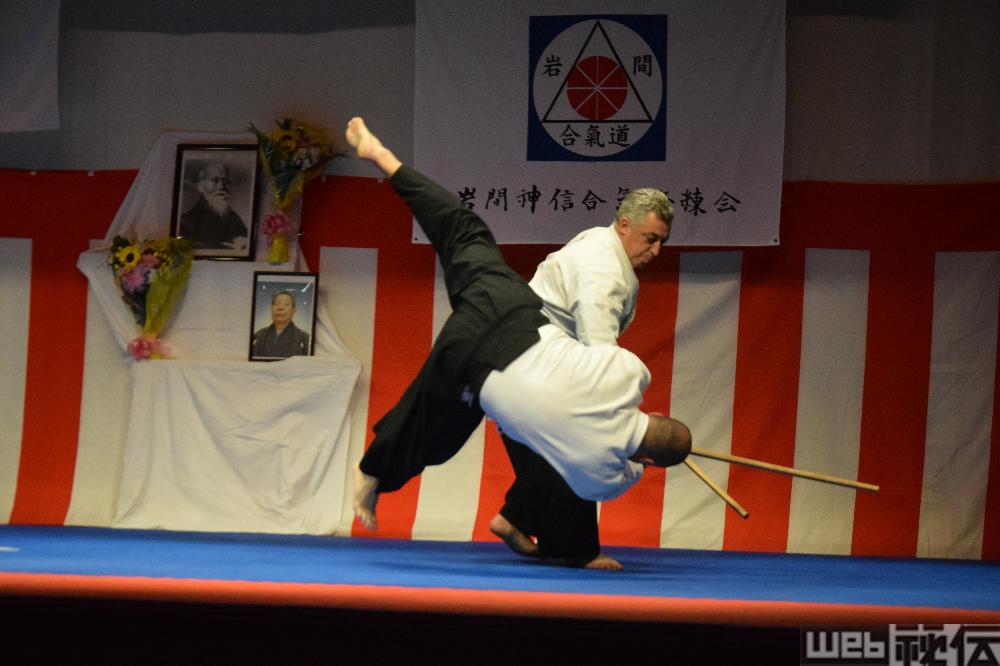
Unarmed techniques, throws and immobilizations, punches and kicks, weapons against weapons (including the famous 13 and 31 jo kata with opponents) and disarming techniques –all were there executed in the three levels of (kihon/katai/rigid, yawarakai/soft and ki-no-nagare/flowing) we have learned to associate with Iwama-ryu’s “four bodies” (kotai/rigid body, jutai/supple body, ryutai/flowing body and kitai/energy body). And everything was reminiscent of the strong, solid movement of Morihiro Saito, filled with loud kiai and atemi strikes, a world apart from what we have learned to call “aikido” as is expressed by the Aikikai and the big circular motions mostly characterizing Kisshomaru Ueshiba’s legacy but also bringing to mind Morihei Ueshiba’s last, almost disembodied period. This aikido carries with it the tough soil the farmers of Iwama must wrestle with to make the land bear fruit –I doubt there can be any clearer analogy for Shin-Shin Aiki Shuren-kai’s style, unassuming and unpretending but not necessarily unsophisticated.
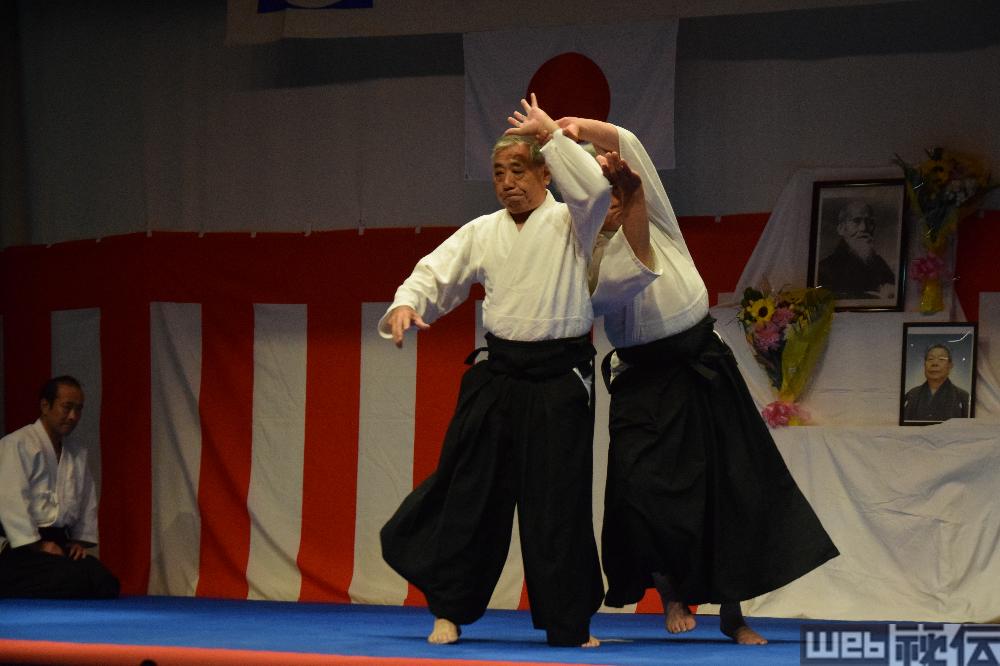
For someone with my background, expressing an opinion about the aikido of Hitohira Saito and his Shin-Shin Aiki Shuren-kai is difficult: my main focus is in weapons’ arts born centuries before his and my aikido background comes from a mix of Kisshomaru Ueshiba and Koichi Tohei, an attempt to balance big movement and instantaneous release of power. Furthermore none of my schools has a particular relationship with the supernatural like that Morihei Ueshiba had with the kami of Japan (there’s a reason Hitohira Saito is using the word “shin/kami” in the name of his organization). But there’s certainly one thing that even someone as distanced as me can recognize: the love he and his people have for Morihei Ueshiba and his teachings, a love so deep that it defies many of the notions of modern budo. For better or for worse, what we witnessed that day in Kasama’s hall was a koryu in the making: compact, personal, focused and with a powerful and all-consuming relationship to its forefathers –give it time and in a couple more generations, we will be seeing it in the demonstrations of the koryu associations next to Daito-ryu or Wado-ryu.
 About the author
About the author
Grigoris Miliaresis has been practicing Japanese martial arts since 1986. He has dan grades in judo, aikido and iaido and has translated in Greek over 30 martial arts’ books including Jigoro Kano’s “Kodokan Judo”, Yagyu Munenori’s “The Life-Giving Sword”, Miyamoto Musashi’s “Book of Five Rings”, Takuan Shoho’s “The Unfettered Mind” and Donn Draeger’s “Martial Arts and Ways of Japan” trilogy. Since 2007 his practice has been exclusively in classic schools: Tenshin Buko-ryu Heiho under Ellis Amdur in Greece and Kent Sorensen in Japan and, since 2016, Ono-ha Itto-ryu under 17th headmaster Sasamori Takemi and 18th headmaster Yabuki Yuji.
http://about.me/grigorismiliaresis

